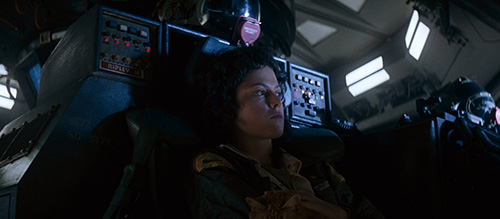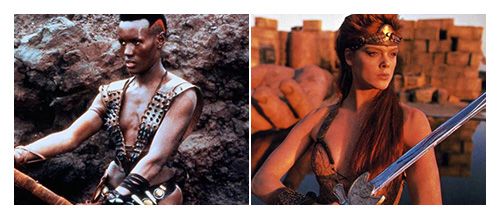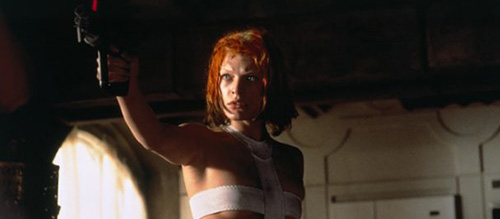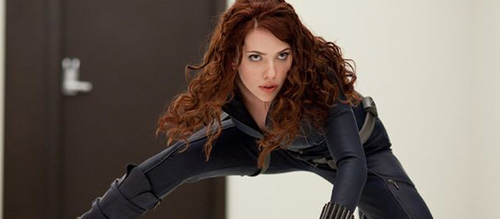From Captive Maiden to Captain Marvel – The Rise of the Female Action Hero
A door is kicked in. It breaks off its hinges with an explosion of wood and shrapnel. A lone figure steps through into the light. But before the dazed gang of henchmen can recover from the blast, a maelstrom of bullets fire out in all directions, turning the bad guy’s into mulch.
With the fresh stench of blood and gun powder in the air, the lone figure turns and delivers the obligatory one-liner to camera…
“Manly man, I’m a big strong man doing man-man things, yeah, bang bang.”
Okay, so that’s a little juvenile, but this was pretty much the landscape of action films back in the day. The very idea that the figure appearing from the smoke, having just turned a bunch of nameless faces into swiss cheese be a woman, was one seldom heard of. And whilst it’s taken a long time for females to share equal spotlight with the men in the action arena, Hollywood has finally started to throw an extra couple of X chromosomes into the mix.
While female heroes are much more common on the big screen these days, the origins of the female action star can probably be traced back to the 1970s. Blaxploitation movies like Coffy and Foxy Brown made Pam Grier as bad-ass behind the barrel of gun as any Hollywood hard nut of the time.
However, one could argue that Princess Leia was the first widely regarded female action hero, holding her own alongside Luke and Han in 1977s Star Wars, and playing a vital part in the destruction of the Empire.
The late Carrie Fisher’s performance as Leia Organa of Alderaan is nothing short of iconic, and her status is well and truly set in the pantheon of great female heroes, transcending both gender and genre to become one of the most beloved characters of all time.
Jumping to hyper speed and landing in another galaxy not so far away, we arrive in the deepest, darkest corner of space, aboard the starship Nostromo, for Ridley Scott’s Alien (1979).
Coming off the success of Star Wars, Alien was put on the fast track by the studio in the hope they could capitalize on the sudden sci-fi boom – only this time with a horror element thrown in for good measure. But where many were expecting the only non-testosterone-filled member of the crew to meet some grisly, bloody end, and have a male thwart the alien threat as per usual horror/sci-fi fare, the film did the unexpected by having the sole survivor be none other than a wuh…wuh…woman!
Sigourney Weaver played Ellen Ripley over four movies and went on to establish herself as the queen of sci-fi. But did you know that this almost didn’t happen as the part of Ripley was originally written for a male? Director Scott described his decision to swap the role for a woman as follows: “I just had a thought. What would you think if Ripley was a woman? She would be the last one you would think would survive—she’s beautiful.”
Yes, Ellen Ripley proved that women could get just as down and dirty (and covered in alien goo) as the men, implanting, much like a face-hugger would, the notion that a woman could be an action icon too.
In the 1980s everything suddenly got bigger. Power was the name of the game, not just in the political landscape, but also on our movie screens, and no one encapsulated power quite like Arnold Schwarzenegger. Big and bad-ass with bulging biceps became the staple for action heroes in the 80s, and if the women wanted to hang with the guys, they were expected to be the same.
Two women who possessed such qualities were Grace Jones and Brigitte Nielsen (both of whom appeared opposite Schwarzenegger) as tall, muscular, world-weary Warriors.
In Conan the Destroyer (1984) supermodel/singer Jones played the ferocious bandit Zula who joined Conan on his quest after being freed from vengeful villagers. Wielding nothing but a Bo staff and sporting a sweet ‘Fresh Prince’ hairdo, Jones made Zula a stand out character in an otherwise camp, silly and quite frankly boring sequel. It’s worth pointing out that Zula was originally a male in comic books – Conan is a Marvel comics property – but director Richard Fleischer sought to swap out the role for a female as to avoid only casting females in the ‘damsel in distress’ role that was so common at the time.
Jones would later go on to appear in A View to a Kill as Christopher Walken’s evil henchwoman, May Day.
A year later (in 1985), Schwarzenegger would once again pick up the sword, playing yet another bulked-up, prehistoric protector. This time, however, the show belonged to the titular Red Sonja, played by Danish actress Brigitte Nielsen as the female answer to the baby-oiled barbarian.
Red Sonja, although ultimately a camp, cringe-worthy slog of a movie, worthy of any ‘Mystery Science Theatre 3000’ episode, did, in fact, give the world the type of female action hero that it was sorely lacking for the time.
And so came the 90s… and with it an evolution of the action hero.
The notion of super-jacked, six-packs on legs was now an antiquated one, and the public wanted heroes they could relate to. In the men’s corner, we got Bruce Willis as the wise-cracking, beat cop-turned-bad-ass John McClane in the Die Hard sequels (the first coming out in 1988), as well as Nicolas Cage as the overly expressive, slightly coo-coo go-to action star of hit films Face-Off and Con Air, to name just two.
In the women’s corner, there was a similar shift in hero type. Women no longer needed to muscle-match with the men. Instead, filmmakers flipped the script, casting cutesy girl-next-doors as the next big action stars. Sure, there were a few hangovers from the 80s. Sarah Conner of The Terminator series went and got all beefed-up with a machine gun in the 1991 follow-up, but the scales were definitely tipping in a new direction.
In 1992, ‘Buffy the Vampire Slayer’ gave us the most unlikely of action heroines. Buffy Summers was a typical young, popular high-school beauty, who one day was approached by the mysterious Donald Sutherland and told of her true destiny as ‘The Slayer’: a chosen one charged with fighting the forces of evil.
Despite the film’s poor reception, the film gave birth to an icon that would later be re-envisioned on the small screen (in 1996) and remain one of the most beloved and influential female action heroes ever.
In The Fifth Element (1997) we were introduced to yet another unlikely heroine in Mila Jovovich’s Leeloo. In the film, Leeloo is a supreme being who takes the form of a beautiful, orange-haired woman to help defeat a dark force known as the Great Evil.
The character became an instant fan favourite (as did the film, earning a cult following for its futuristic aesthetic and humorous tone) as she emphasised a vulnerability and child-like view of the world, all the while making the character strong, funny, endearing, and more than adept at handing any alien its own ass.
This new vision of female ass-kickery was echoed in many other female lead actioners during this time, including a previous Luc Besson film, La Femme Nikita (1990) and the similarly themed (albeit less nuanced, but a lot more fun) The Long Kiss Goodnight (1996).
And thus came the 20th Century…
2001 marked a colossal shift in the political arena, and once again our on-screen heroes felt the shift too, undergoing another transformation in the wake of 9/11. Whereas in the 90s heroes could get away with a fly by the seat of your pants mentality, relying on lucky escapes followed by a perfectly timed one-liner, the movie-going audience now wanted our heroes to be more competent and highly trained. Hollywood responded with male-led action films like the Bourne franchise, Mission Impossible sequels and Taken. All government men, with a specific set of skills, able to nullify their enemy with expert precision. And yeah, the women got an upgrade too.
In Lara Croft: Tomb Raider (2001), not only were fans treated to a much-beloved video game character hitting the silver screen and busting up all manner of ancient rock monsters and out of control robots, but audiences got a new action star in Angelina Jolie who would go on to star in Mr. & Mrs. Smith, Wanted and Salt. Now, say what you want about the film and its sequel Tomb Raider: The Cradle of Life (both of which deliver on action, but little else), but there’s no denying the importance of Tomb Raider as a stepping stone in the rise of the female action hero, even going on to spawn a new incarnation in last year’s Tomb Raider reboot.
A year later, another video Game made its motion picture debut in 2002’s Resident Evil. The protagonist of the film, Alice, an amnesiac with mysterious ties to the Umbrella Corporation, was an original creation for the big screen treatment of the zombie-centric franchise. This change in source material gave the series the opportunity to power-up its female star with not only an extraordinary set of abilities but multiple clones of herself to truly unleash a more efficient death toll – it’s just a shame the series strayed from its horror roots in favour of slow motion stunts and dodgy wire-work.
Other notable heroines from this era include Uma Thurman’s The Bride, from Tarantino’s Kill Bill series – a women intent on getting revenge on those who left her for dead – and Kate Beckinsale’s leather-clad Lycan hunting Selene from the Underworld franchise, both of whom became regular entries on ‘greatest female hero’ lists and frequent cosplay choices for fans worldwide.
It’s also worth giving a special shout out to Malaysian actress Michelle Yeoh, who has starred in many action roles over the years, including centrally in Crouching Tiger Hidden Dragon and Tomorrow Never Dies.
And finally, we come to the tens? Tenties? Not sure what the official name for this decade is. Tennies? Oh, forget it, let’s just say 2010 and onwards.
Enter the superheroes…
While superhero movies have been around for a lot longer, their cinematic origins arcing all the way back to 1978’s Superman, the recent influx of superhero cinema certainly took a giant leap forward when Fox’s soon to be vanquished X-Men franchise kicked off back in the summer of 2000.
There had previously been a few attempts at a female-led superhero film over the years, including Supergirl (1984), Catwoman (2004) and Elektra (2005), all of which failed to live up to expectations. Having tried a couple times and failed, Hollywood was convinced that people didn’t want to see female superheroes, despite making numerous male-led superhero films that bombed equally as bad at the box office.
Still, we did get superpowered women on the big screen, they just had to be surrounded by a bunch of men.
Most notably, we were gifted with Scarlett Johansson’s Black Widow, who popped up first in 2010’s Iron Man 2 and hit big with audiences, playing a huge part in success of the Marvel Cinematic Universe over the following years.
Surprisingly, only now, years after fans demanded a stand-alone Black Widow feature is the assassin-turned-Avenger finally getting her own solo outing, due to begin production this year for a (presumed) 2020 release.
But in 2017, Hollywood finally blinked, and the world got a female superhero film it could be proud of in Patty Jenkins’ Wonder Woman. Gal Gadot, who had shown up as a scene-stealer in the much-maligned Batman V Superman: Dawn of Justice, gave females a true action icon as the amazonian princess, inspiring generations of girls who would now grow up with a kick-ass female superhero to call their own. The film became such a success, in fact, it went on to outperform every other film in the DCEU at the American box office and earn the series its first fresh rating on Rotten Tomatoes.
The triumph of Wonder Woman also gave the Hollywood big-wigs the confidence to go ahead and produce more female superhero films, including the 21st entry from Marvel Studios: Captain Marvel (which, to be fair, was in production long before Wonder Woman even came out.)
Academy Award-winning actress Brie Larson will play the titular hero come March 8th, hoping to smash both those pesky Skrull’s and global ticket sales in equal measure, and help permanently solidify a female presence in an otherwise male-dominated genre.
From desperately fighting to stay alive, to flat out fighting for the hell of it, the female action hero has broken free of its male constraints over the decades and risen to be a force to be reckoned with. So here’s hoping the future landscape of action films continue to feature progressive male and female characters alike, as well as give audiences worldwide heroes they can truly believe in.







